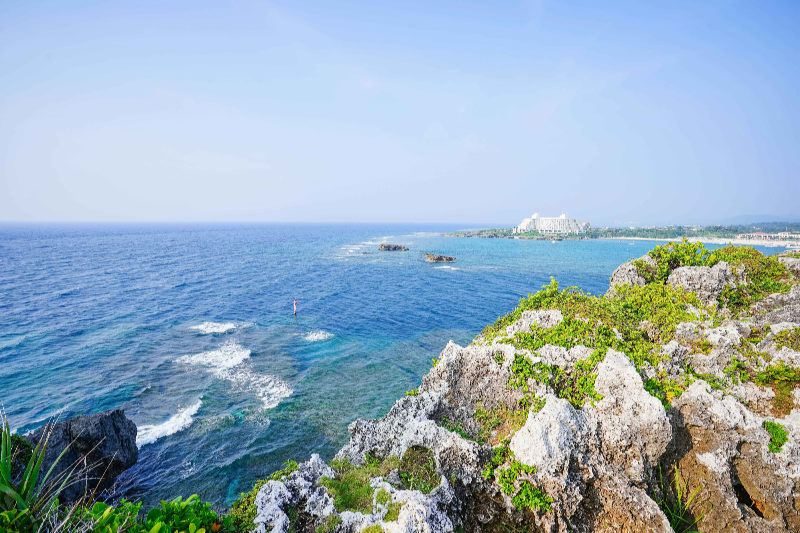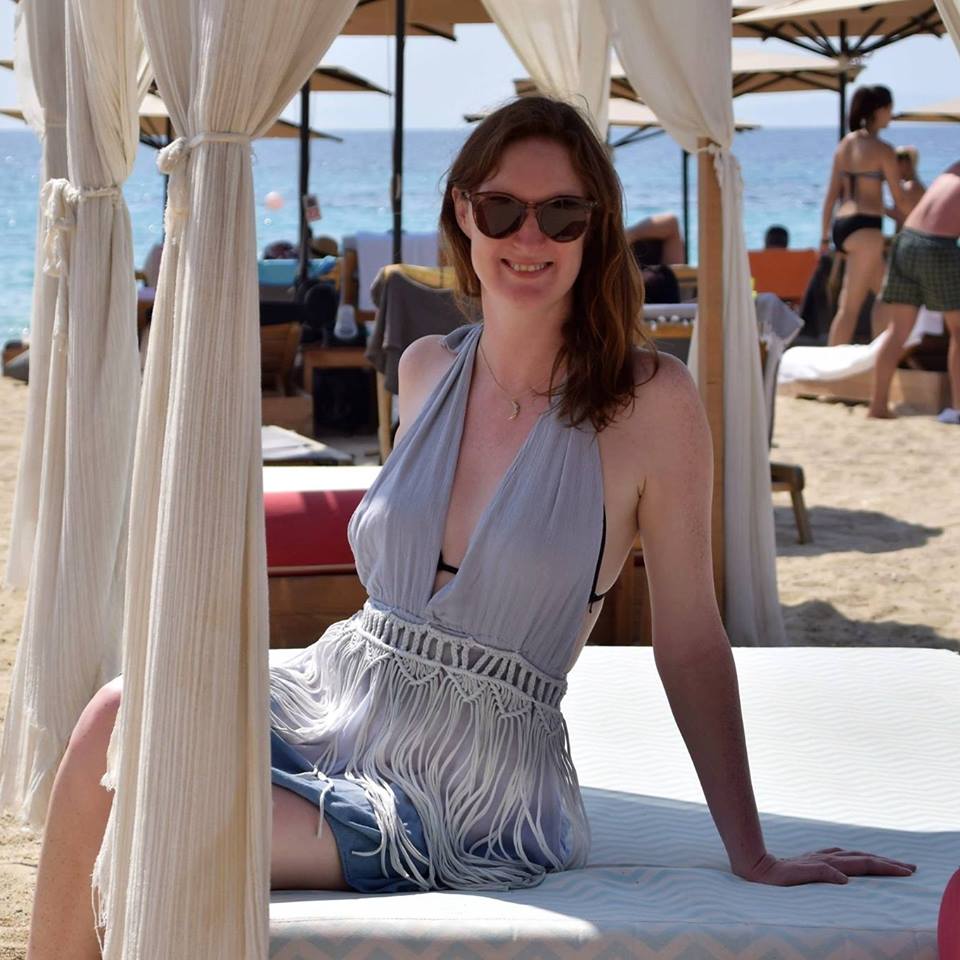Japan‘s remote Okinawa islands in the Pacific Ocean are its best-kept secret. Many of the islands are quiet and serene, despite their tropical climate, sandy beaches and delicious food. A few years ago, I visited Okinawa as part of a 3 week Japan trip. In this post, I will share my top tips on how to create the perfect Okinawa itinerary for 7 days.
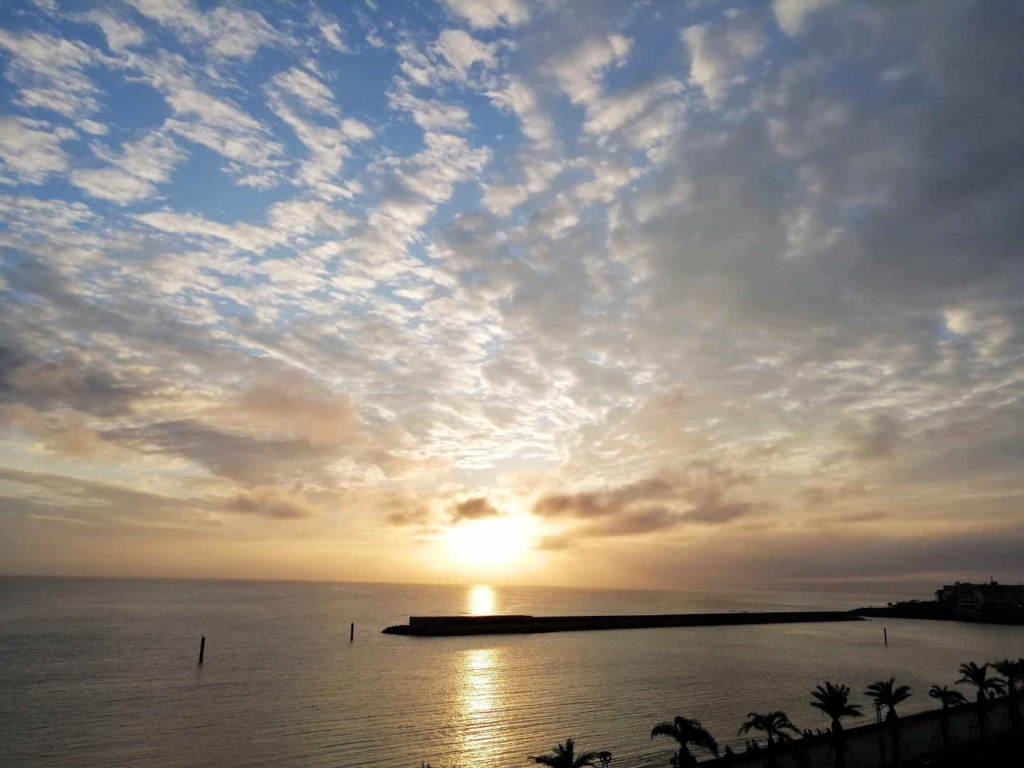
This post may contain affiliate links. That means, if you make a purchase, I may receive a small commission. As an Amazon Associate I earn from qualifying purchases. For more information, read my disclaimer.
How many days in Okinawa is enough?
So, how many days in Okinawa do you really need? If you are planning to stay on the main island, 7 days in Okinawa is ideal, because:
- It allows for beach relaxation and adventure: blend beach time with travelling and activities.
- Explore both main and remote islands: you can discover places further afield in the islands if you hire a car.
- Take your time without feeling rushed: one week in Okinawa will give you time to see and do everything you want to.
Especially you plan to travel to some of the other islands, an Okinawa itinerary 7 days or more is perfect.
Check out the latest deals on cheap flights to Okinawa.
The best places to stay on your Okinawa itinerary
If you’re wondering where to stay in Okinawa, you have a number of options. The best place to stay in Okinawa depends how long you’ll be there and what you want to do.
You will need to bear in mind that the main Okinawa island is long. Even if you hire a car, the maximum speed limit is 60 km per hour (around 37 miles per hour). You will find it takes a while to get to each of the beaches and Okinawa tourist attractions. This is why an Okinawa 7 day itinerary could be more relaxing than a shorter trip. You can read more about all the best places to go in Okinawa below.
For the full overview, check out Lonely Planet’s travel guide book for Japan, including Okinawa, here.
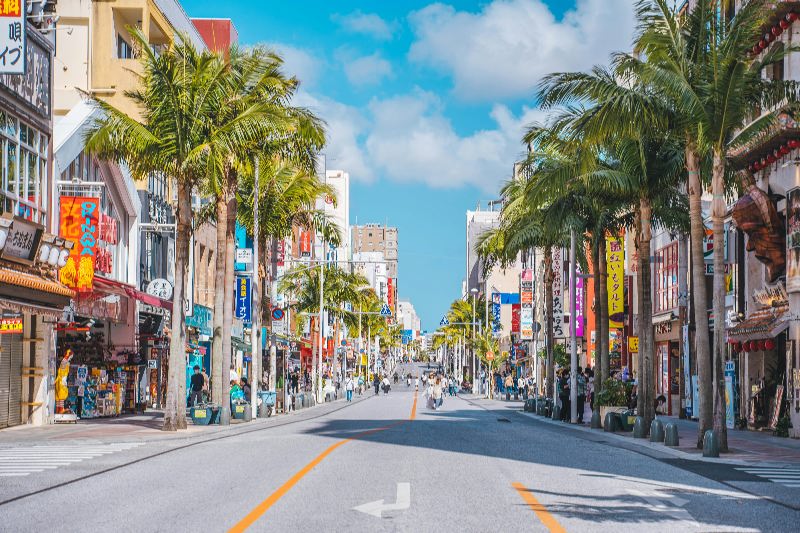
Naha – the capital city
The capital city of Naha is a great place to go shopping and it’s close to the airport. One of the main places to visit in Okinawa for shopping is Naha’s Kokusai Dori Street. Also known as International street, it’s full of bars, shops and restaurants.
If you choose to stay in Okinawa’s capital city of Naha, there are some great hotels here. The boutique-style Mercure Okinawa Naha hotel is conveniently located less than ten minutes from the airport by monorail. Its Bistro de La Mer restaurant offers French dishes paired with excellent international wines.
If you are backpacking Okinawa and looking for a hostel, The Kitchen Hostel Ao is a fabulous place. In a great location, it has friendly staff, mixed and female-only dorms, and a cool ambiance.
Browse and book your room in one of the best hotels and places to stay in Naha.
Chatan – American Village
We stayed in Chatan, around an hour north of Naha. There is an affordable shuttle bus that travels between here and the airport, or you can book a private transfer.
The shuttle took us straight to our hotel, the gorgeous DoubleTree by Hilton Okinawa Chatan Resort. It has sea views, three swimming pools, a spa and a restaurant. The staff there are amazing too, super helpful and friendly.
Other hotels in Chatan, Okinawa include the fabulous Hilton Okinawa Chatan Resort, a short walk from American Village. Guests rave about its sea views and friendly staff.
If you’re looking for a hostel in Chatan, try the hipster AIEN Coffee & Hostel. Solo travellers rate it highly for its location and nice vibe. The colourful Seawall Hostel is two minutes’ walk from the beach and also great for an Okinawa backpacking trip.
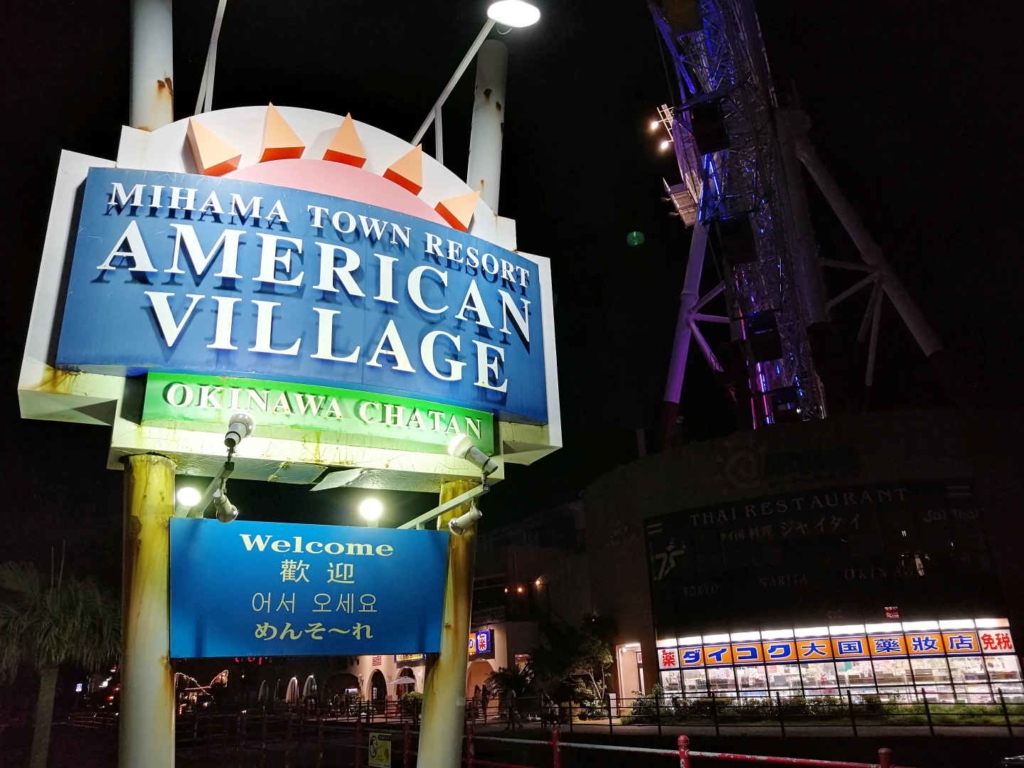
As well as a beach, in Chatan there’s a lively area known as American Village. This colourfully-lit area has a retro, Americana feel and is completely different from the rest of Japan. With many restaurants, shops and entertainment venues, it’s popular with the Americans stationed on the island’s large U.S. military base. Its blend of Japanese and US culture is unique.
Check out the latest deals on the top hotels and places to stay in Chatan.
Onna and Nago – further north
North Okinawa is home to awesome scuba diving spots, as well as fun and unusual tourist attractions in Okinawa.
In Onna you will also find one of the best Okinawa beach resorts. The superb ANA InterContinental Manza Beach Resort hotel is surrounded by the ocean and has a private beach. The Hotel Monterey Okinawa Spa & Resort and the Sheraton Sunmarina Okinawa Resort offer activities for families and sports lovers.
Backpackers in Okinawa should head to the Akachichi Guesthouse in Onna, which has garden views and serves a delicious breakfast.
One of the top-rated hotels in Nago is the Kanehide Kise Beach Palace, which has large rooms and sea views. If you’re looking for a guest house in Nago, the beachfront Stäy Hotel has a rooftop pool and free bikes.
What you need to know about travelling around Okinawa
Sadly, there isn’t yet a good public transport infrastructure in Okinawa. Taxis here are expensive, so the best way to travel around in Okinawa is to hire a car.
The fantastic staff at our hotel organised our Okinawa car rental so we could enjoy an Okinawa road trip.
In Japan, people drive on the left and the roads have a relatively low speed limit. For this reason, even with a car, we found it took longer than expected to visit places. However, in general the local drivers are calm and polite. This makes driving in Okinawa pleasant, even if you are not used to driving on the left. Read on for our Okinawa self-drive itinerary and see below for more tips on driving in Okinawa.
This is the best 7 day Okinawa itinerary
Here’s a quick overview of the ideal 7-day itinerary for your Okinawa adventure:
- Day 1: Naha – Visit Shurijo Castle and explore Kokusai Dori Street and Makishi Public Market for local food and shopping.
- Day 2: Peace Memorial Park & Sefa-Utaki – Pay respects at Peace Memorial Park and visit the sacred Sefa-Utaki, a UNESCO site.
- Day 3: Ikei Island Beach Day – Relax at Oodomari Beach on Ikei Island, known for its pristine waters and peaceful atmosphere.
- Day 4: Blue Cave Snorkelling – Snorkel or dive at the Blue Cave in Onna, exploring Okinawa’s vibrant marine life.
- Day 5: Nago – Churaumi Aquarium & Pineapple Park – Visit the famous Churaumi Aquarium and enjoy a fun tour of Nago Pineapple Park.
- Day 6: Ryukyu Mura & Cape Manzamo – Experience traditional culture at Ryukyu Mura and enjoy stunning views from Cape Manzamo.
- Day 7: Kerama Islands – Take a day trip to the Kerama Islands for snorkelling, beach-hopping, and exploring the clear waters.
Day 1: Explore Naha’s Best Attractions – Shurijo Castle & Kokusai Dori
Begin your Okinawa adventure in Naha, the capital city that blends traditional Ryukyu culture with modern Japanese life.
Start your day by visiting Shurijo Castle, a UNESCO World Heritage Site that was once the heart of the Ryukyu Kingdom. The castle’s vibrant red architecture and intricate designs reflect a unique fusion of Japanese and Chinese influences, giving you a glimpse into the rich history of Okinawa. Take a guided tour through the castle grounds, explore the museum, and enjoy panoramic views of Naha from the hilltop. Despite suffering damage during World War II, the restored castle remains a powerful symbol of Okinawan resilience and heritage.
Afterward, head to Kokusai Dori Street for lunch and some shopping. This lively avenue, known as “International Street,” is lined with restaurants, cafés, and souvenir shops where you can sample local Okinawan specialties like goya champuru (bitter melon stir-fry) or taco rice, a fusion dish combining American and Japanese influences.
Stroll down the street to Makishi Public Market, where vendors sell fresh seafood, tropical fruits, and unique Okinawan products. It’s the perfect place to soak up the local atmosphere and start your trip with a vibrant, cultural experience. You can even have fresh fish from the market prepared at one of the nearby eateries. End the day by wandering the side streets of Naha to discover hidden gems, from artisan shops to quaint cafés.
Book a guided e-bike tour of the 12 Zodiac Temples in Naha here.
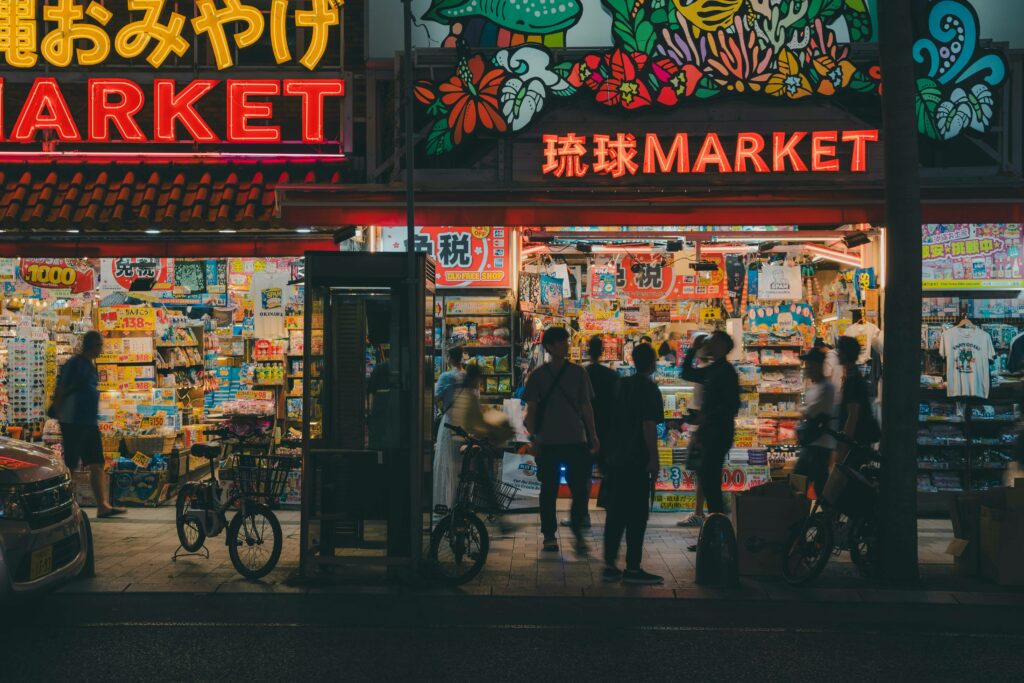
Day 2: Okinawa’s History and Spirituality – Peace Memorial Park and Sefa-Utaki
Peace Memorial Park
Start your day with a visit to Okinawa’s Peace Memorial Park, a 40 minute drive from Chatan and 30 minutes south of Naha. It is one of the most thought-provoking places to go in Okinawa.
Here, you can pay your respects to the many lives lost on both sides of the Battle of Okinawa. In World War II’s last major battle, over 180,000 American troops invaded Okinawa island to defeat Japan. There is a museum here where you can discover the devastating impact of the war on Okinawa and its people.
As you explore the park, you’ll find monuments dedicated to the fallen, offering a solemn reminder of the immense human cost of the battle. It’s a place of reflection and remembrance, where the tragic history is preserved in hopes of promoting peace and understanding.
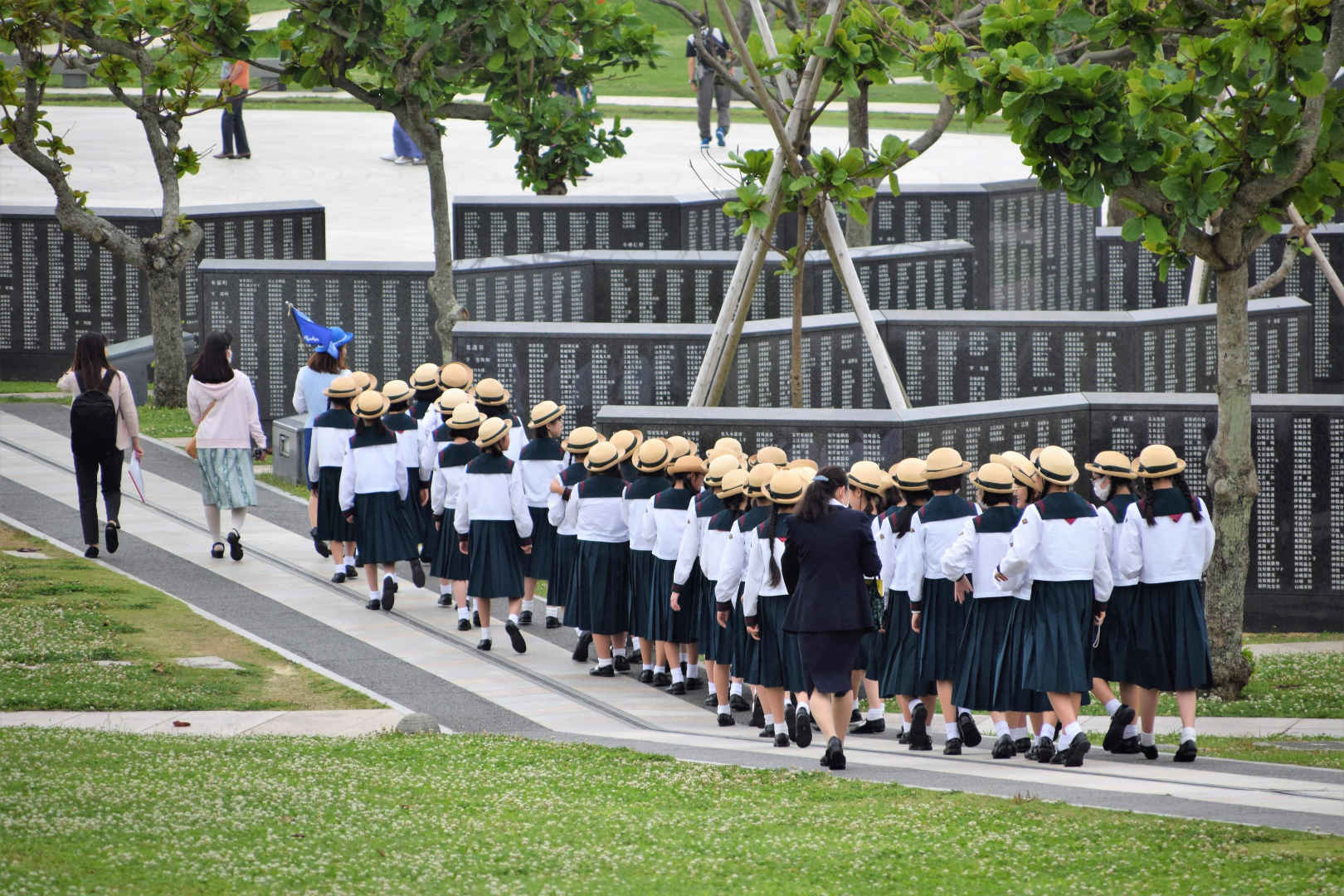
Sefa-Utaki
In the afternoon, continue to Sefa-Utaki, a UNESCO World Heritage Site, about 40 to 45 minutes by car from Peace Memorial Park (approximately 18.5 miles/30 km). One of the main Okinawa points of interest, this sacred site has enormous spiritual significance.
I loved Sefa-Utaki. For thousands of years, people have come here to worship in Okinawa’s native Ryukyuan religion. This religion values paying respects to our ancestors, as well as the gods and spirits of the natural world.
According to Ryukyuan texts, Sefa-Utaki was where Amamikyu, the goddess of creation, first manifested and set foot on Okinawa. Kings and priestesses would make pilgrimages here for ceremonies to pray for the prosperity of the kingdom and its harvests.
Winding staircases and footpaths lead through lush jungle surroundings to shrine areas and notable rock formations. The last place you reach is the most sacred. Here, two huge rocks lean against each other, forming a triangle-shaped space, like a natural cathedral.
The peaceful surroundings and spiritual energy make it a powerful place to end your day.
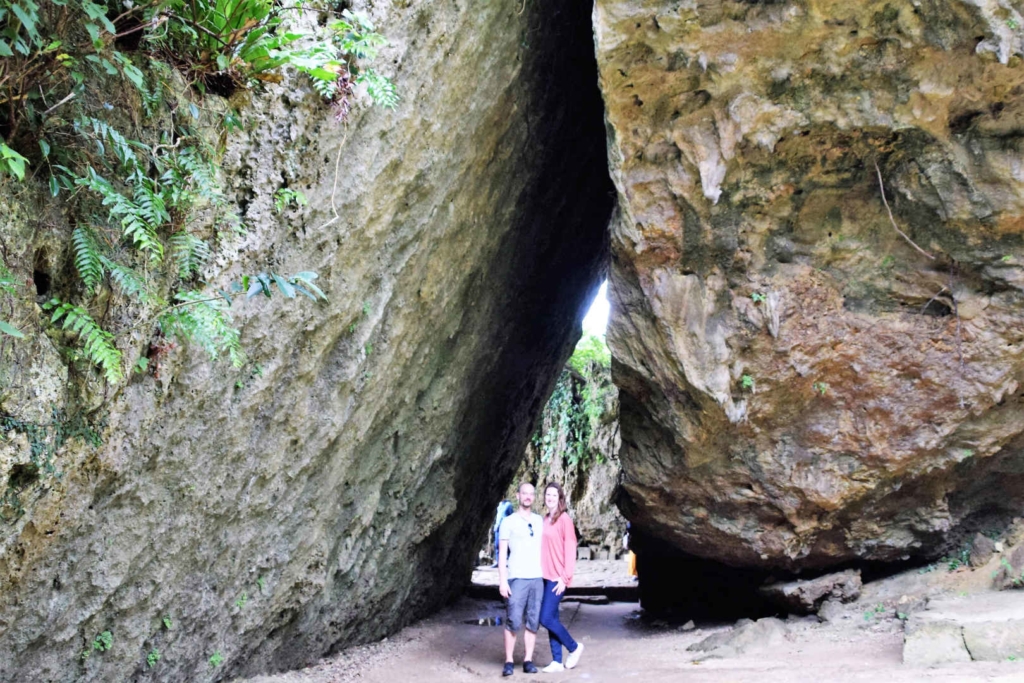
Day 3: Relax at Ikei Island’s Oodomari Beach
As part of our Okinawa travel itinerary, we couldn’t wait to experience some of the best beaches in Okinawa, which are known for their beauty and tranquility. Oodomari Beach, located on the remote Ikei Island, is a hidden gem that offers a serene escape with hardly any crowds.
The drive to Ikei Island, about an hour from Chatan or 1.5 hours from Naha, is an adventure in itself. You’ll cross several bridges that connect the smaller islands to the main Okinawa island, making this journey along our Okinawa self-drive route both scenic and enjoyable. The turquoise waters and peaceful atmosphere at Oodomari Beach make it one of the top spots for a quiet beach day.
On many Okinawa beach trips, you’ll find that private beach owners charge a small fee for access, and Oodomari is no exception. However, this also means you can enjoy a more secluded experience. The crystal-clear water is perfect for swimming and teeming with tropical fish, making it ideal for snorkeling as well. Basic facilities, like showers, are available so you can wash off the sand and seawater before heading back. For those seeking a peaceful retreat, Oodomari Beach is one of the best hidden beaches in Okinawa.
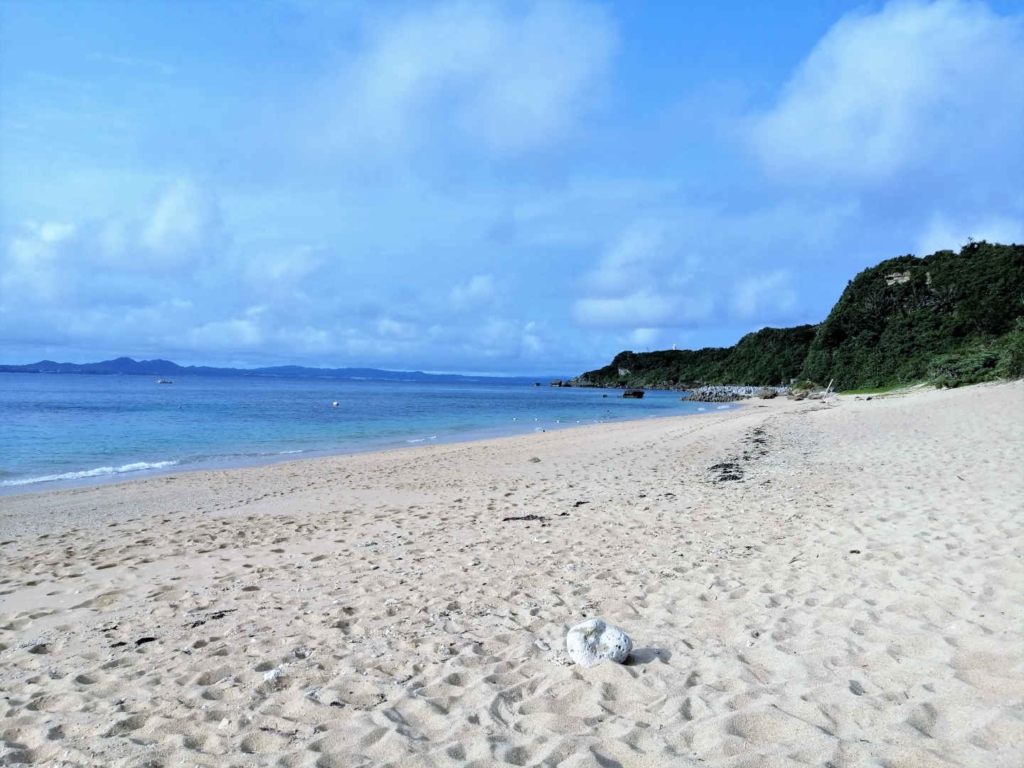
Day 4: Snorkelling at Okinawa’s Famous Blue Cave in Onna
On Day 4 of your Okinawa adventure, dive into the crystal-clear waters of Blue Cave, one of the most popular snorkelling and diving spots in Okinawa. Located in Onna Village, about an hour’s drive from Naha, this underwater cave is famous for the magical blue light that illuminates the cave’s interior, creating a surreal experience. It’s best to visit early in the morning to avoid crowds and enjoy calmer waters.
As you snorkel or dive in the Blue Cave, you’ll be surrounded by Okinawa’s vibrant marine life, including colorful tropical fish and stunning coral formations. The waters here are ideal for both beginners and experienced divers, making it a must-visit location for anyone looking to experience Okinawa’s underwater world. Local tour operators offer guided snorkelling and diving tours, providing all the equipment you need and ensuring a safe and memorable adventure.
After exploring the cave, take some time to relax on the nearby Maeda Flats Beach or grab a bite at one of the local seaside cafés. Whether you’re a seasoned diver or a first-time snorkeler, the Blue Cave offers an unforgettable glimpse into Okinawa’s aquatic paradise, making it a highlight of your Okinawa 1-week itinerary.
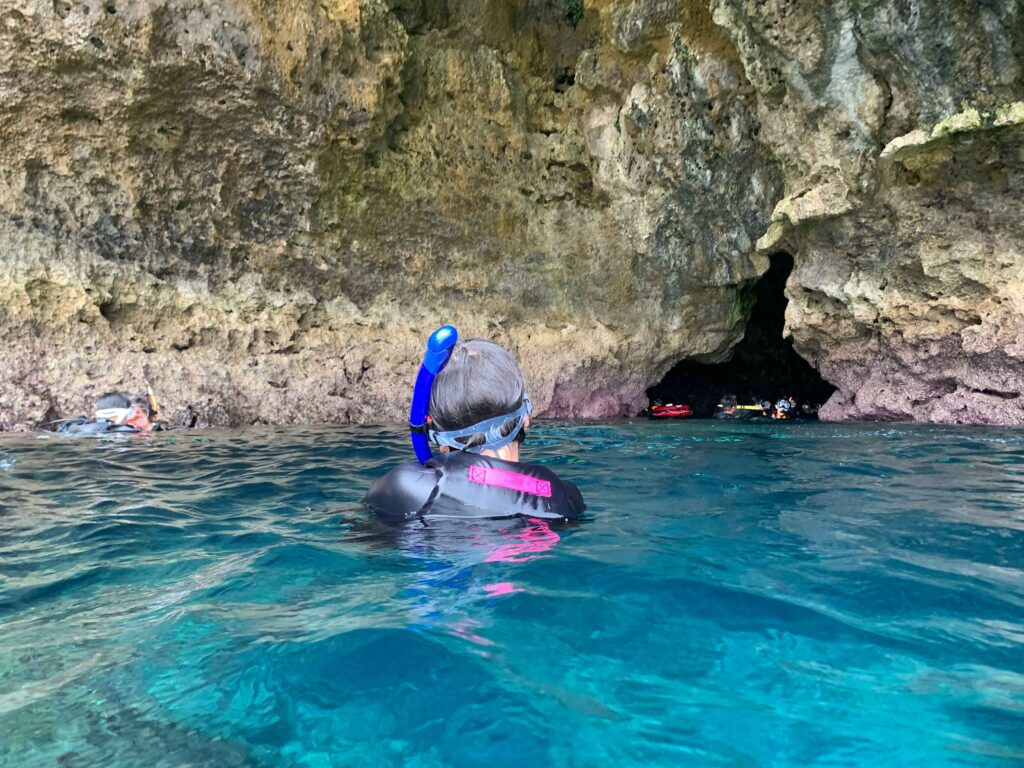
Day 5: Discover Nago – Okinawa Churaumi Aquarium and Pineapple Park
On Day 5 of your week in Okinawa, head to Nago, a beautiful destination in northern Okinawa, to explore two of the most popular attractions in the region. Start with a visit to the world-renowned Okinawa Churaumi Aquarium, one of the best aquariums in Japan and a must-see for marine life enthusiasts. The aquarium features stunning exhibits of Okinawa’s rich marine biodiversity, including the iconic Kuroshio Sea Tank, home to giant whale sharks, manta rays, and vibrant coral reefs. This incredible facility showcases the marine wonders of Okinawa and is a highlight for any traveller. The nearby underwater observatory at Busena Marine Park is another one of the best places to visit in Okinawa.
After soaking in the underwater world, make your way to the charming Nago Pineapple Park. A fun and interactive experience it’s perfect for all ages, making it one of Okinawa’s main tourist attractions. Learn about Okinawa’s thriving pineapple industry as you tour the park’s fields in a pineapple-shaped cart, and indulge in delicious pineapple treats like fresh pineapple slices, pineapple wine and pineapple-flavored desserts.
Okinawa has its own brand of American-style beer, called Orion. It has been widely consumed on the island for the last 60 years. You can also visit the Orion Happy Park in Nago and tour the factory where Orion beer is brewed.
By the end of Day 5, you will have experienced some of the top tourist attractions in Nago, a key part of your Okinawa itinerary.
Book a guided one-day tour of Nago’s Churaumi aquarium and Pineapple Park here.
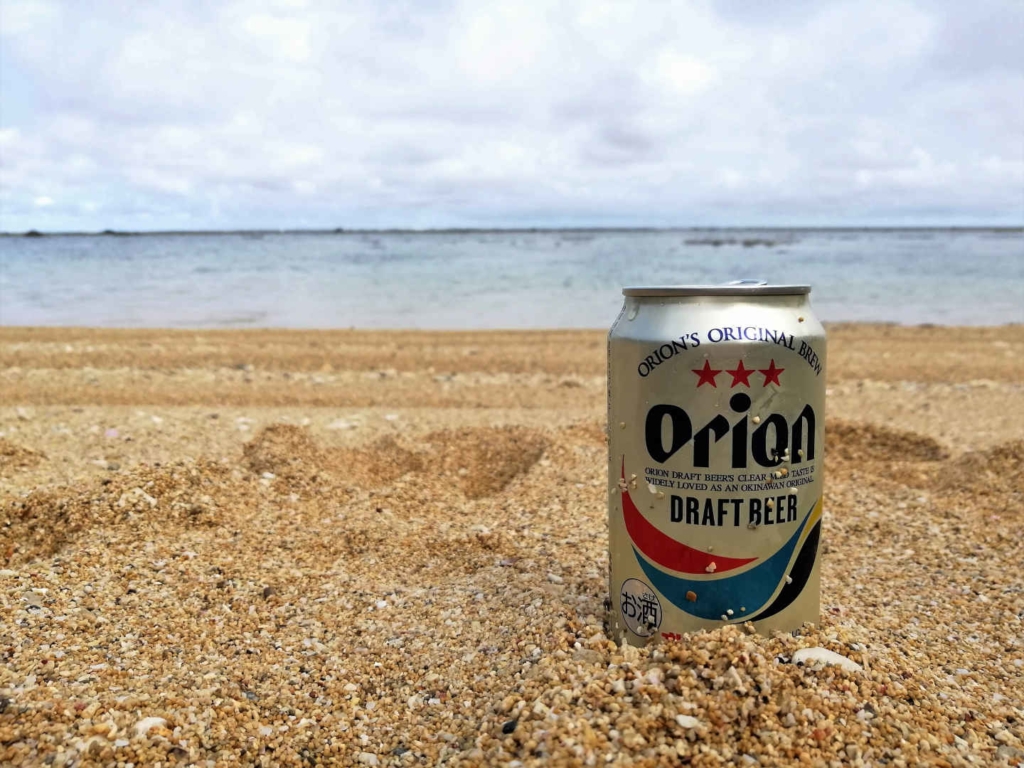
Day 6: Explore Ryukyu Mura and Cape Manzamo – A Cultural and Scenic Adventure
Explore the cultural highlights on Day 6 of your Okinawa vacation plan. Take a journey through Okinawa’s rich cultural heritage and stunning natural landscapes.
Start your day with a visit to Ryukyu Mura, a popular Okinawa cultural theme park where you can step back in time and experience life as it was in the days of the Ryukyu Kingdom. This traditional Okinawan village showcases authentic architecture, folk performances and cultural workshops. You can try your hand at local crafts, watch dynamic Eisa drum performances, and even learn about Okinawa’s famous pottery and textile techniques. One of the most notable places of interest in Okinawa, Ryukyu Mura offers an immersive way to understand the island’s unique culture and traditions.
In the afternoon, take a short drive to one of the most iconic Okinawa scenic spots, Cape Manzamo. This dramatic cliff, carved by the waves of the East China Sea, offers breathtaking panoramic views that make it one of the best photo locations in Okinawa. The rugged rock formations and sweeping sea vistas are perfect for nature lovers and photographers alike. Cape Manzamo is not only a natural wonder but also a symbol of Okinawa’s beauty, making it a must-visit attraction for anyone exploring the island.
By the end of Day 6, you’ll have experienced the best of both worlds—immersing yourself in Okinawa’s traditional culture at Ryukyu Mura and marveling at the island’s natural beauty at Cape Manzamo. These two destinations are key highlights of any Okinawa itinerary, offering a perfect balance of history, culture and stunning scenery.
See Ryukyu Village and Manza Cape by booking a sightseeing bus tour with audio guide.
Day 7: Kerama Islands Day Trip – Best Snorkelling & Beaches in Okinawa
Wrap up your Okinawa 7-day trip with a visit to the stunning Kerama Islands. This offers the perfect ending to your trip, as the islands are known for their crystal-clear waters, pristine beaches, and vibrant coral reefs. We headed from Naha to Kerama National Park on our scuba-diving trip.
There are many Okinawa scuba diving sites around the islands, which are surrounded by coral reefs. Just a short ferry ride from Naha, the Kerama Islands are a group of smaller islands that are part of a national park, offering some of the best snorkeling and diving experiences in Okinawa.
Start your day by taking a snorkelling tour or diving excursion to explore the colorful underwater world of the Kerama Islands. The clear waters here are home to abundant marine life, including tropical fish, sea turtles, and vivid coral formations. Whether you’re an experienced diver or trying snorkeling for the first time, the Kerama Islands offer an unforgettable marine adventure.
After your snorkeling or diving session, spend the rest of your day relaxing on one of the beautiful white-sand beaches that make the Kerama Islands famous. Popular spots like Furuzamami Beach on Zamami Island or Aharen Beach on Tokashiki Island provide perfect places to unwind, swim, and soak in the natural beauty of this tropical paradise.
On your Naha to Kerama Islands snorkelling tour, you’ll end your day with a boat ride back to Naha, reflecting on the natural wonders and unforgettable moments from your Okinawa itinerary. The Kerama Islands are truly one of the best day trips from Naha, offering a peaceful escape and the perfect way to conclude your week in Okinawa.
Book your Full-Day Introductory Diving Trip from Naha to the Kerama Islands
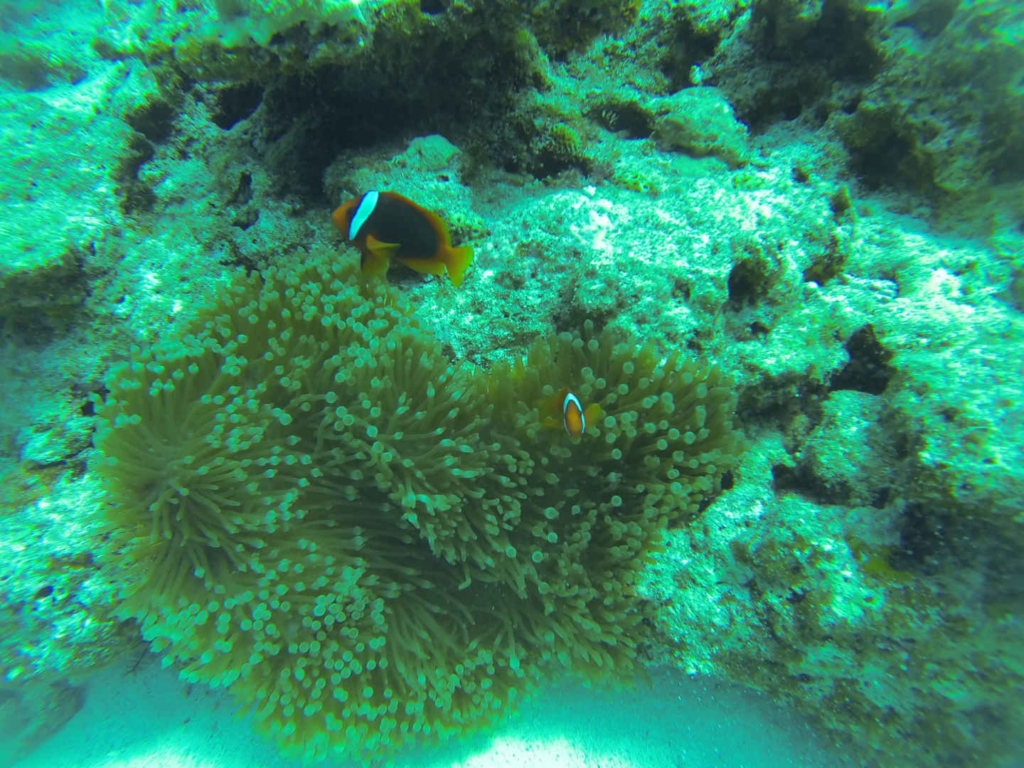
This is the best time to visit Okinawa
Temperatures on the Okinawa islands reach around 20°C all year round, thanks to the subtropical climate. In Okinawa, beach opening is from March all the way through to October. It’s the perfect stop in Japan for beach lovers.
Okinawa’s main rainy season is in May and June. In July and August, temperatures reach over 30°C/86°F. There is a chance of typhoons hitting the islands from then until September. Okinawa’s weather in December to February has the lowest temperatures, at closer to 20°C/68°F, and the lowest amount of rainfall.
If you’re wondering, when should I visit Okinawa, the best time is March to early April or October to November.
Don’t go without Lonely Planet’s essential Japan and Okinawa travel guide book – buy it here.
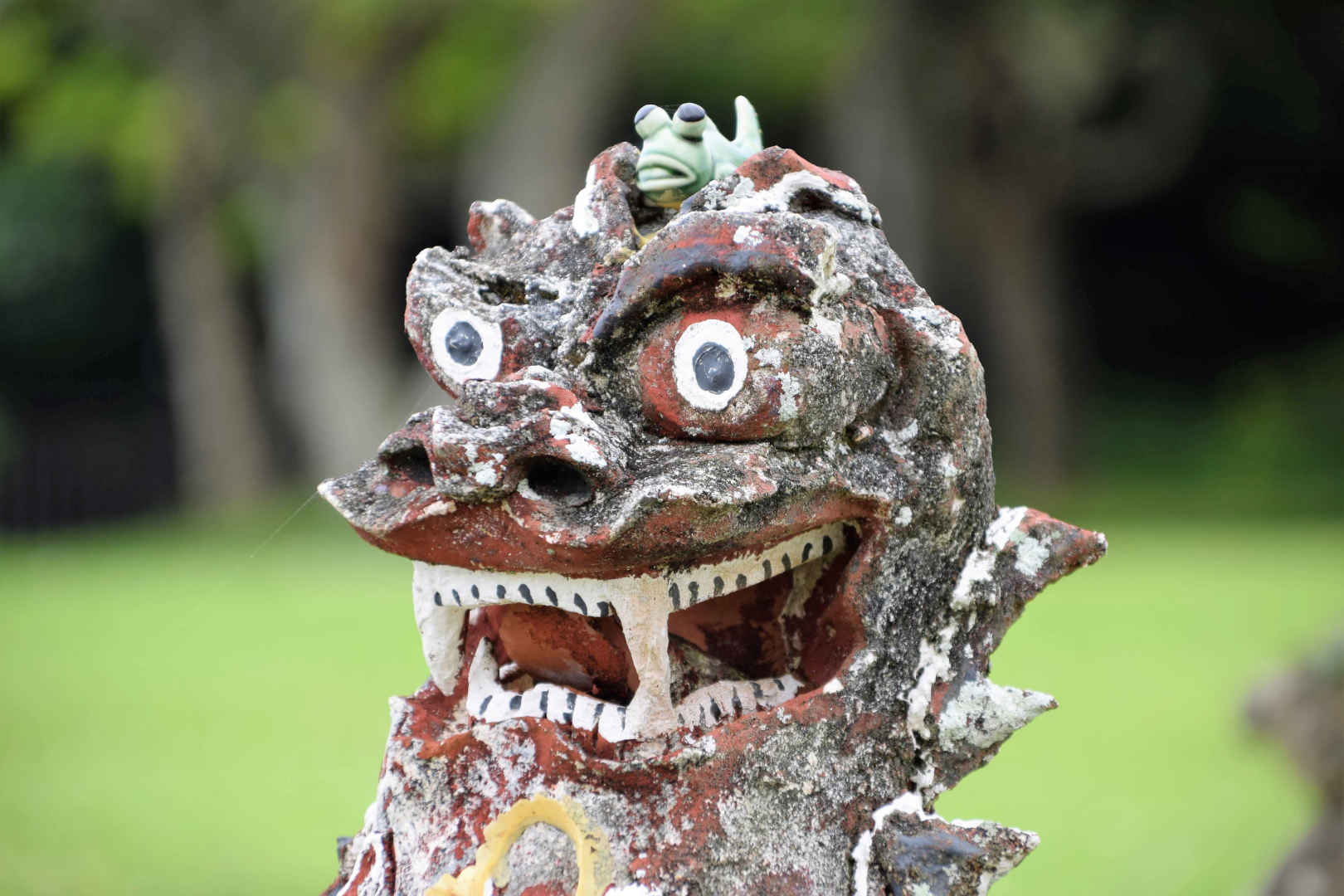
How to get to Okinawa
The main Okinawa airport is in Naha. There are different sections depending on whether you are flying to or from Japan or internationally. Airlines such as ANA operate cheap flights to Okinawa from the main islands of Japan.
Check the flight times and prices for cheap flights to Okinawa.
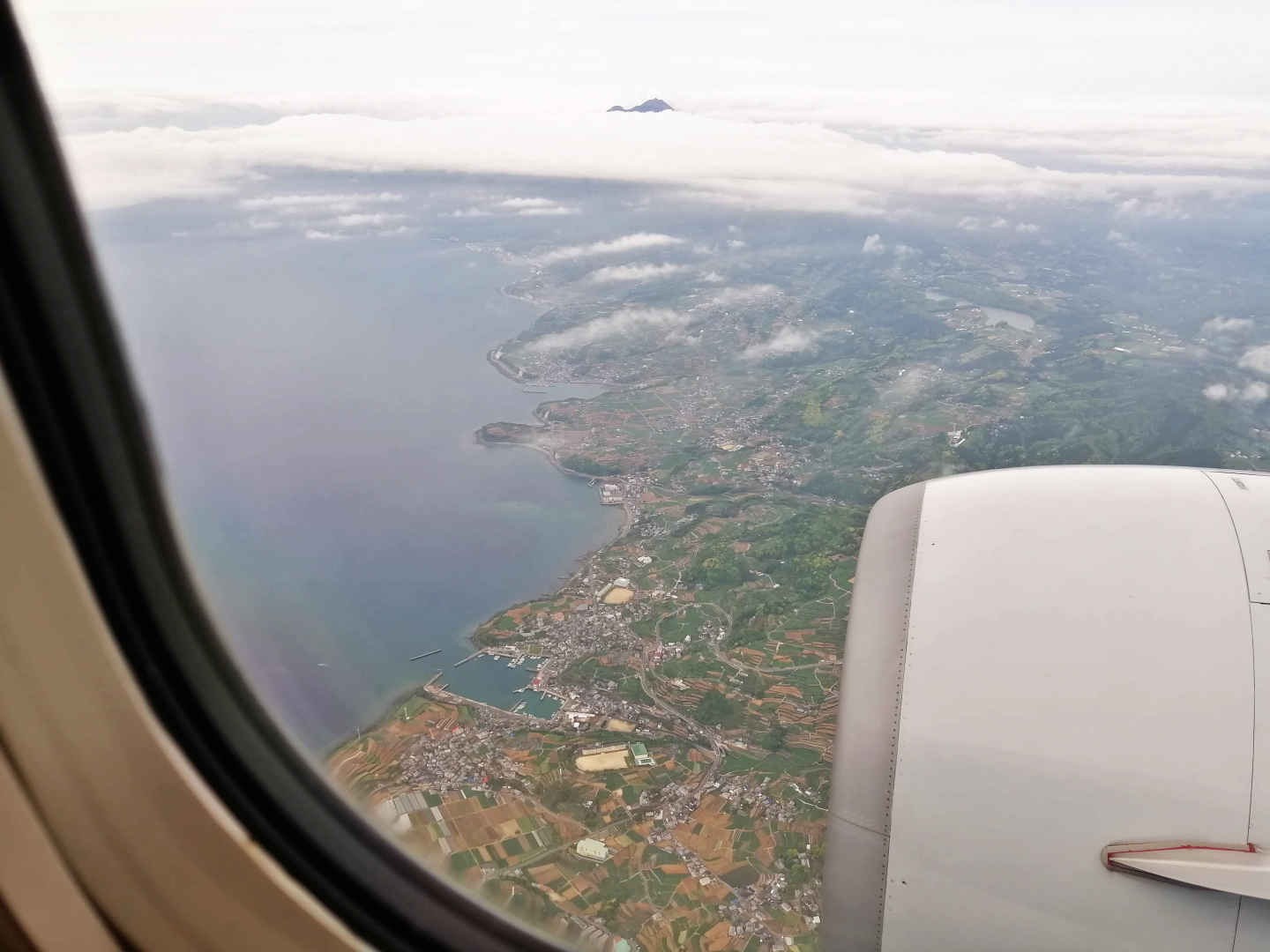
Flights from Tokyo to Okinawa can cost as little as US$60 and take almost three hours.
From Osaka to Okinawa takes just under two hours and flights can cost from around US$45. From Kyoto to Okinawa it’s two hours and 15 minutes, priced from around US$80 depending on the time of year.
The flight time from Hong Kong to Okinawa is two hours and 40 minutes and costs from around US$100. Meanwhile, Singapore to Okinawa flights take five hours and are closer to US$300.
If you are wondering how to go to Okinawa from Malaysia, flights are from Kuala Lumpur and stop in Taiwan. Costing around US$225, it takes 7.5 hours.
Check the latest prices for your date for flights to Okinawa here.
More tips on driving in Okinawa
Okinawa is best explored by car, as public transportation is limited, especially when you want to reach the more remote beaches, islands, and attractions. Here’s what you need to know about renting a car in Okinawa:
1. Car Rental Companies
There are several reliable car rental companies in Okinawa, offering a range of vehicles from compact cars to family vans. Popular options include:
- Toyota Rent-a-Car: Known for its excellent service and wide range of vehicles, including hybrid and electric cars. They have multiple locations, including at Naha Airport, making it convenient for travelers to pick up and drop off vehicles.
- Nippon Rent-a-Car: Another trusted company, with competitive rates and English-speaking staff. They offer GPS systems in multiple languages, which is a great asset for navigating Okinawa’s roads.
- Orix Rent-a-Car: Offers affordable options and often has discounts for longer rentals. It’s ideal for travelers planning to spend a week or more exploring Okinawa.
2. Rental Costs
Car rental costs vary depending on the type of car and the rental period. On average:
- A compact car rental costs around ¥5,000-¥7,000 per day (approximately $35-$50).
- Larger cars, SUVs, or minivans can cost between ¥8,000-¥12,000 per day (around $60-$85).
Keep in mind that during peak travel seasons (spring and summer), prices may be higher, so it’s recommended to book in advance.
3. Driving Tips
- International Driver’s Permit (IDP): If you’re a foreign traveller, you’ll need an International Driver’s Permit to rent and drive a car in Okinawa. Make sure to apply for one in your home country before your trip, as it’s mandatory.
- Driving on the Left: Like the rest of Japan, cars drive on the left side of the road in Okinawa. If you’re not used to this, take extra caution, especially at intersections and roundabouts.
- Speed Limits: The speed limit in Okinawa is generally 60 km/h (37 mph) on main roads and 80 km/h (50 mph) on highways. Be aware that Okinawa’s roads are more laid-back compared to the mainland, with a relaxed driving culture.
- Tolls: Some highways in Okinawa have tolls. Make sure your rental car is equipped with an ETC (Electronic Toll Collection) card for smoother passage through toll booths, or be prepared to pay with cash.
- Navigation: GPS systems in Okinawa are often programmed with phone numbers, which can be used to find locations like hotels, restaurants and attractions. Many car rental companies provide GPS systems in English or other languages, making navigation easier.
4. Parking
Parking is generally available at most tourist spots, hotels, and attractions in Okinawa. However, in urban areas like Naha, finding parking might be more challenging. Parking fees vary, with typical rates around ¥100-¥300 per hour (about $1-$3).
5. Fuelling Up
Most gas stations in Okinawa are full-service, meaning attendants will fill your car for you. You’ll find that prices are relatively standard across the island, and stations are easily accessible near major towns. Make sure to fill up before heading to more remote areas where stations may be sparse.
By renting a car, you’ll have the freedom to explore Okinawa at your own pace, reaching stunning beaches, secluded shrines, and scenic viewpoints that are off the beaten path. Just remember to book early, especially during high season, to secure the best rates and vehicle options.
Feast on the unique food in Okinawa
Okinawan cuisine is a unique fusion of Japanese, Chinese, and American influences, creating flavours and dishes you won’t find anywhere else in Japan. Here are a few must-try dishes and highly-rated local restaurants where you can enjoy authentic Okinawan food.
For us, one of the best Okinawa restaurants was a semi-hidden restaurant called Oshino in Chatan’s American Village. Here, each table is fixed with its own teppanyaki grill, where your food is cooked in front of you. They even give you a special spatula to cut and serve your meal onto your plate. The restaurant specialises in original versions of teppanyaki dishes.
Everything we ate here was good but my favourite was a Tex-Mex take on Japan’s famous okonomiyaki savoury pancake dish . It’s an Okinawan speciality – you won’t find this anywhere else in Japan.
Read on for more tasty and unique Okinawa dishes:
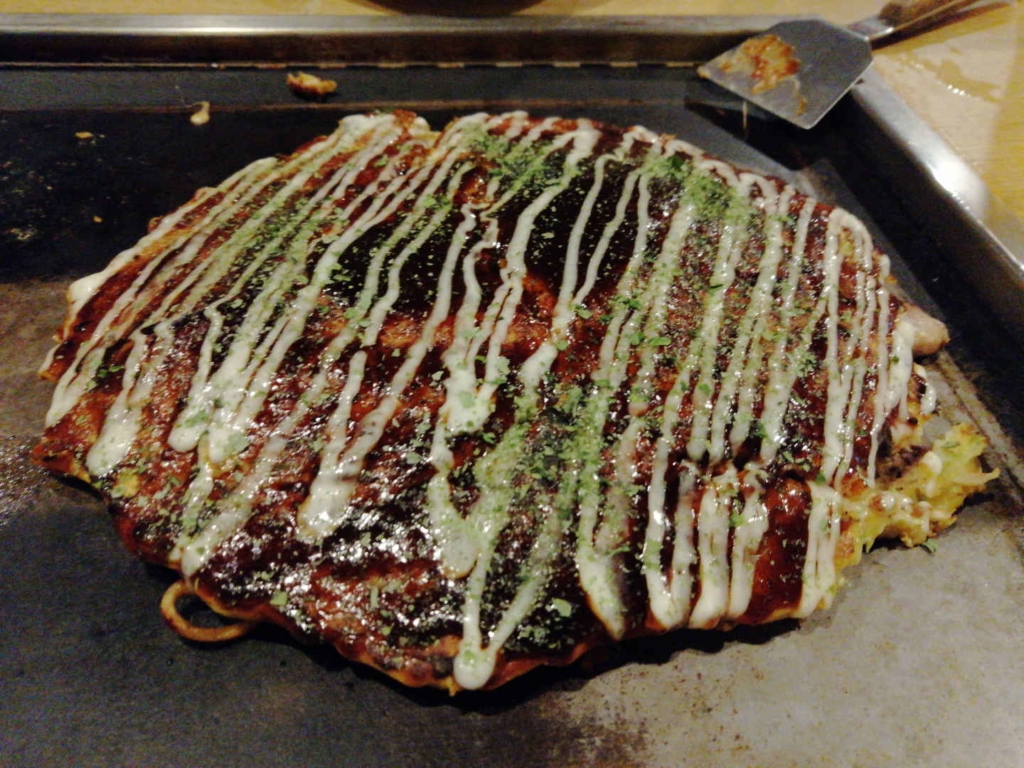
1. Taco Rice
A perfect blend of Tex-Mex and Japanese flavours, Taco Rice is a local favourite, inspired by the nearby U.S. military base. It consists of seasoned ground beef, lettuce, tomato, and cheese served over a bed of steamed rice, often topped with salsa or mayonnaise. You can find this dish across Okinawa, but a standout spot is King Tacos in Kin Town, known for its large portions and fresh ingredients. Another popular spot is Tacos-ya in Chatan, where the taco rice is made fresh to order with a flavourful, homemade twist.
2. Spam Sushi (Spam Musubi)
Spam is weirdly popular in Okinawa, a remnant of the island’s history with the U.S. military. It turns out this famous U.S. tinned pork brand was brought over during World War II and never left. At the time, it was one of the islanders’ few sources of meat. In the American Village’s huge Aeon supermarket, you’ll see shelves stacked with many variations and flavours of Spam.
Spam sushi, or Spam musubi, is a local snack that combines grilled Spam, seasoned rice, and nori (seaweed). One of the best places to try this is at Pork Tamago Onigiri Honten in Naha’s Makishi Public Market. This small shop specializes in Spam-based onigiri, offering variations with egg, vegetables, and even tofu. It’s a quick, budget-friendly snack that gives you a taste of Okinawa’s unique fusion cuisine.
My recommendation is to try the breakfast sushi Spam sandwich, a popular breakfast for Okinawa residents. You can find it in the chilled section of supermarkets such as the 7-11. This is rice covered with nori seaweed and filled with egg, Spam and tomato ketchup. It’s surprisingly tasty!
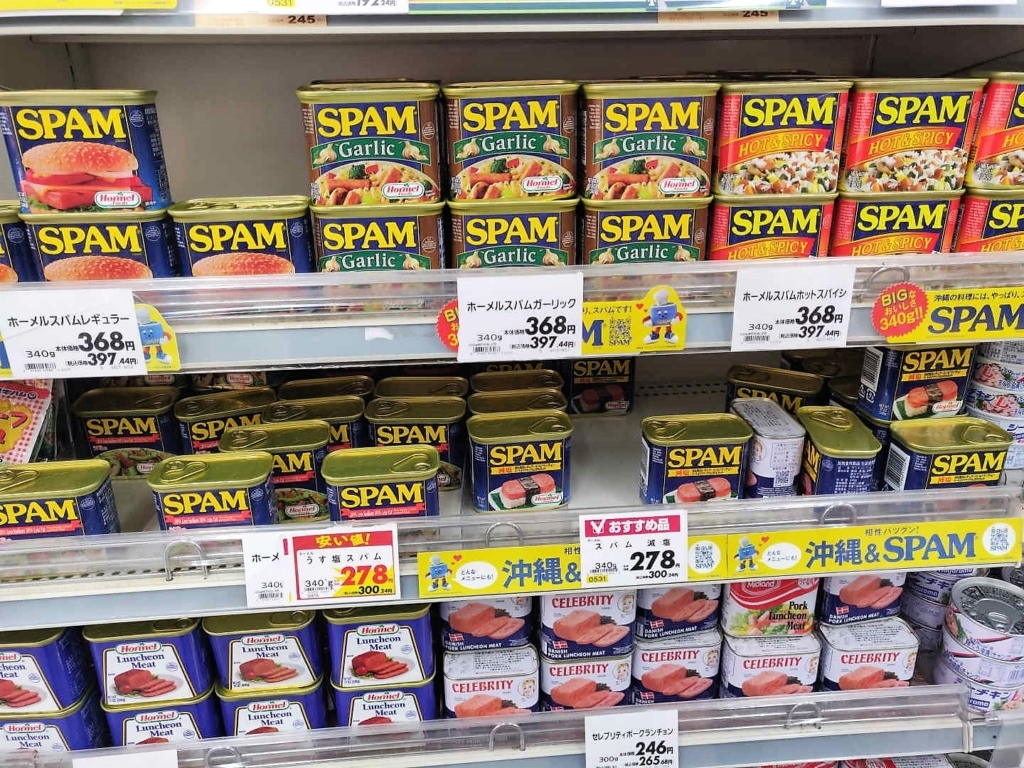
3. Goya Champuru
Goya Champuru is one of the most iconic dishes in Okinawan cuisine. It’s a stir-fry made with bitter melon (goya), tofu, pork, and eggs, and it represents the island’s healthy diet. You can try this flavorful dish at Heki, a chain of restaurants throughout Okinawa, known for its traditional cooking and fresh local ingredients. Another great spot is Shimujo in Naha, a family-owned restaurant serving authentic Okinawan dishes in a cozy, traditional setting.
4. Soki Soba (Okinawa Soba)
A visit to Okinawa wouldn’t be complete without sampling Okinawa soba, a noodle soup dish made with thick wheat noodles, pork ribs (soki), and a rich pork broth. For a top-rated bowl of soba, visit Shuri Soba near Shurijo Castle. This small, no-frills restaurant is known for its tender pork and flavorful broth. Another popular spot is Kamara Soba in Onna, where the noodles are handmade, and the broth is simmered to perfection.
5. Tempura
Okinawa’s take on tempura is slightly different from the mainland version, with a lighter, fluffier batter. Try it at Oshiro Tempura Shop on Ojima Island. We loved this humble shop, which is a popular stop for both locals and visitors, offering crispy, tasty tempura at affordable prices. It’s known for its freshly fried tempura made with local ingredients like goya (bitter melon) and benimo (purple sweet potato). Okinawans love to use these bright purple sweet potatoes in their savoury and sweet dishes.
Whether you’re sampling taco rice at a roadside stall or enjoying goya champuru at a traditional izakaya, Okinawa’s diverse culinary scene will delight your taste buds with a mix of bold flavours and cultural influences.
Buy Okinawan souvenirs to treasure
When you explore Okinawa, you will often see what look like guardian lions at the entrance of doorways and shrines. These are shisa, traditional Ryukyuan decorative beasts from Okinawan mythology, believed to ward off evil.
The left shisa traditionally has its mouth closed in order to keep the good spirits in. Meanwhile, the beast on the right has an open mouth to banish the evil spirits. You can find plenty of replicas of these shisa to decorate your home or give as a present.
Another popular souvenir from Okinawa is the region’s famous sweet potato tarts. At the airport, you will find many examples of these bright purple treats to pick up as a unique gift.
Final thoughts on creating the perfect Okinawa itinerary
Okinawa remains a relatively overlooked part of Japan and many visitors do not venture down to these tropical islands. It’s understandable when there are so many amazing things to do in Japan.
While there are some fabulous hotels, the islands are not yet set up to be major tourist destinations. One example of this is the lack of public transport across the region. However, this is part of Okinawa’s charm. If you are interested in culture, food, history and beaches, Okinawa is a fascinating and rewarding place to visit.
Book the best hotels for your Okinawa stay here.
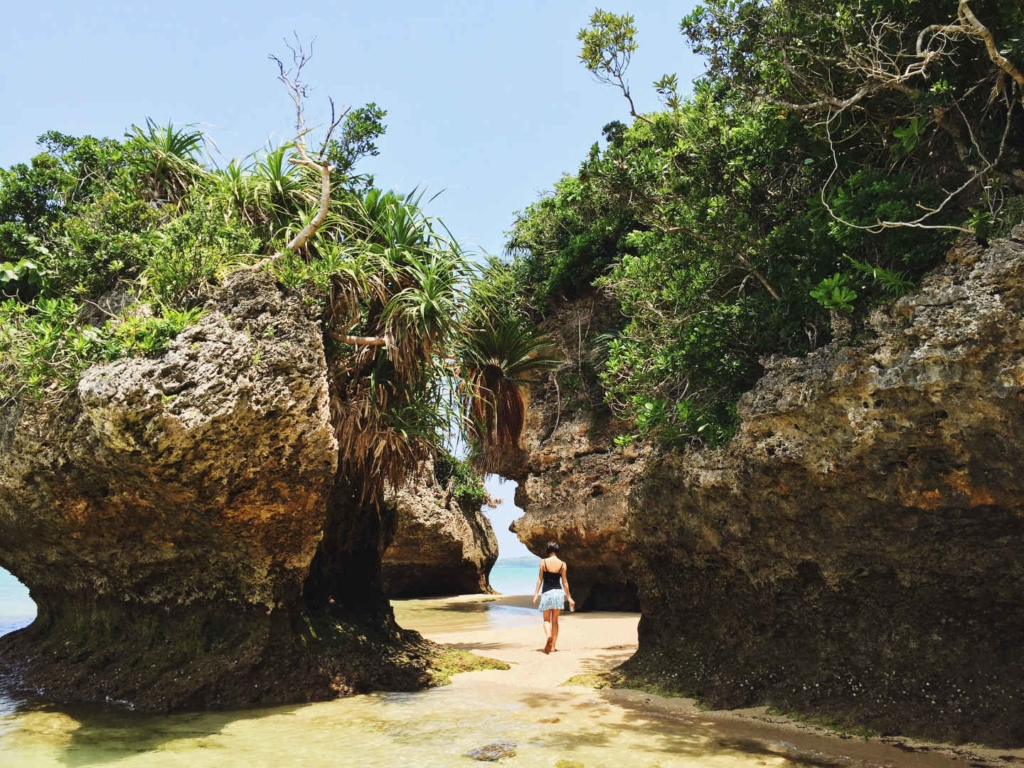
Next, read about how to create a three-week itinerary in Japan that you will remember forever.


